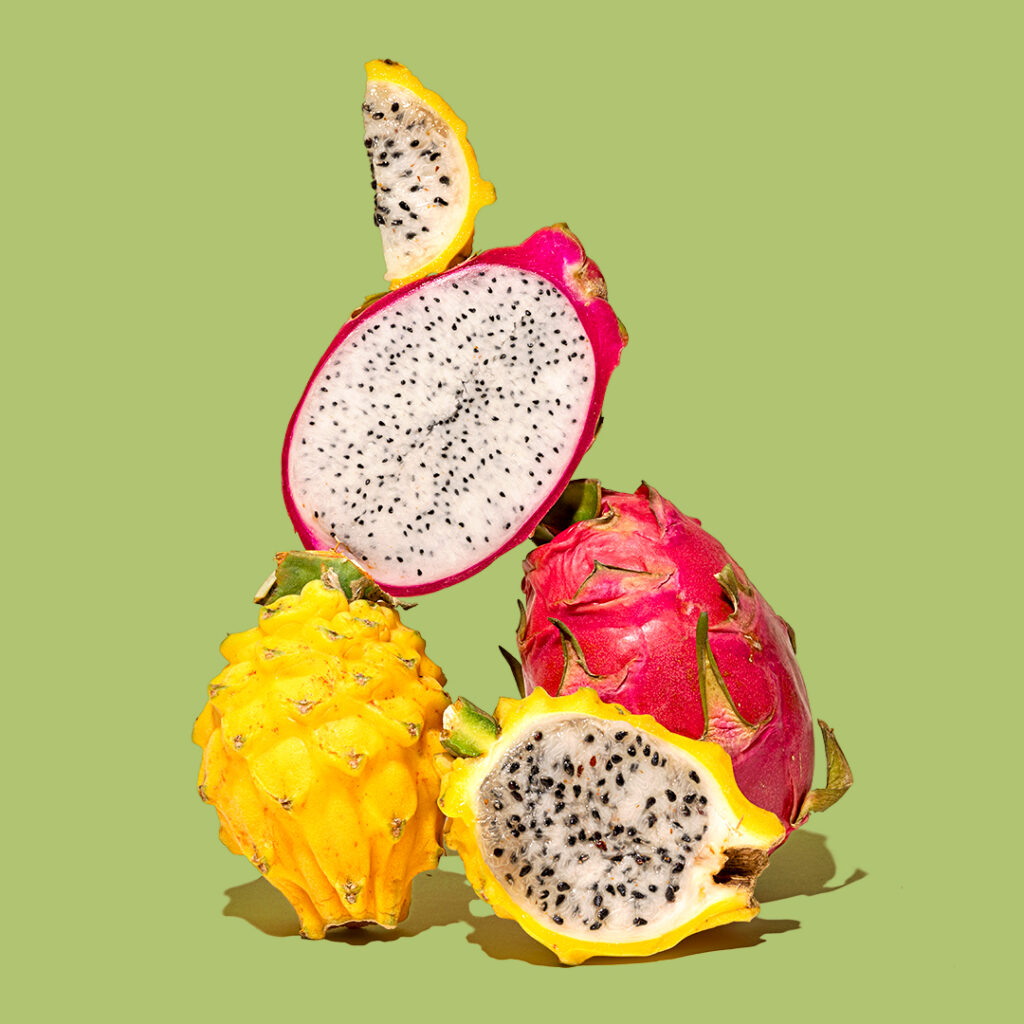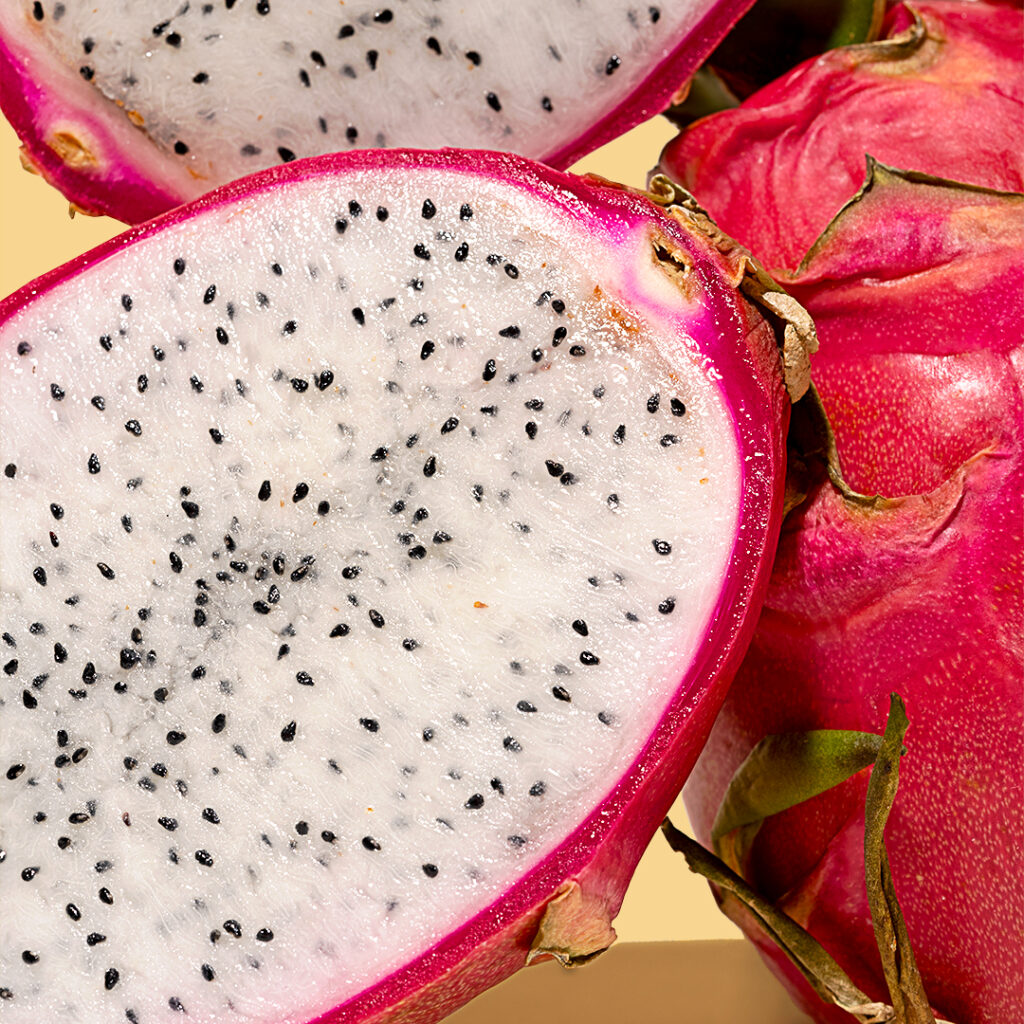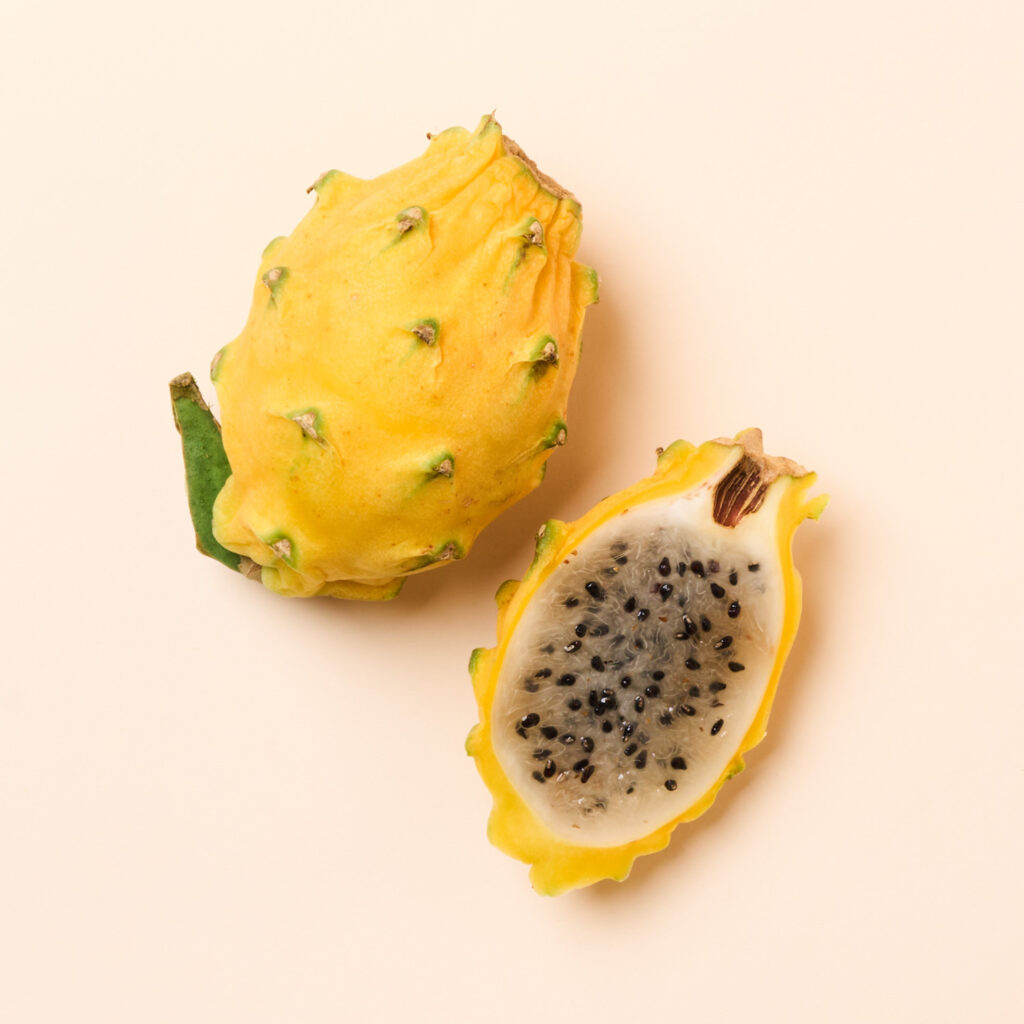
Spiky, neon, and straight-up magical-looking, dragon fruit (a.k.a. pitaya) is one of those fruits that stops you in your tracks. But don’t let the looks fool you—this tropical stunner is surprisingly easy to prep and even easier to love.

Here’s everything you need to know to slice, store, and savor this summertime favorite.
What Is Dragon Fruit?
Dragon fruit comes from a climbing cactus and is native to Central America, though it’s now grown in tropical and subtropical regions around the world. On the outside, it looks like something from a cartoon: bright pink or yellow skin with green spiky scales. On the inside? A creamy, speckled flesh (white, red, or deep magenta) that’s subtly sweet and loaded with nutrients.
Dragon Fruit Nutrition & Benefits
- Rich in antioxidants like vitamin C and betalains
- Good source of fiber to support digestion
- Hydrating thanks to its high water content
- Naturally low in calories
- May support gut health thanks to prebiotic properties
How to Tell If Dragon Fruit Is Ripe
Give it a gentle squeeze—ripe dragon fruit should feel soft, like a ripe avocado or kiwi. If it’s too firm, give it a day or two on the counter. You’re also looking for bright, vibrant skin with only a few blemishes.
How to Cut A Dragon Fruit (& Eat It!)
- Cut it in half lengthwise.
- Scoop out the flesh with a spoon (like an avocado) or peel the skin off and slice or cube it.
- Eat it fresh or add to your favorite recipes—no need to remove the seeds (they’re totally edible).
Note: The skin is not edible, but it’s great for presentation—use it like a little bowl!
How to Store Dragon Fruit
- Whole, uncut: Store on the counter for 2–3 days or in the fridge for up to a week.
- Cut: Store in an airtight container in the fridge and eat within 2–3 days.
- Want to freeze it? Cube it and freeze on a tray before transferring to a container. Perfect for smoothies later.
Dragon Fruit Varieties: Red, Yellow, White & Pink


Red Dragon Fruit vs. Yellow Dragon Fruit vs. White Dragon Fruit vs. Magenta Dragon Fruit
All dragon fruit is hydrating, sweet, and stunning—but depending on the variety, you’ll get a slightly different look, taste, and texture. Here’s how to tell them apart:
Red Dragon Fruit
- Bright pink skin with white or deep magenta flesh
- Most common variety
- Mild, sweet flavor (think: kiwi meets pear)
- Great for smoothies, salads, and snacking
Yellow Dragon Fruit
- Yellow skin with white flesh
- Smaller but often sweeter and more aromatic
- Juicier texture with fewer seeds
- Slight floral taste—and rumored to be especially great for digestion
White Dragon Fruit
- Pink skin with white flesh
- Classic pitaya look
- Milder, more refreshing flavor
- Crisp, slightly firmer texture that holds up well in fruit salads
Magenta (Pink) Dragon Fruit
- Pink skin with vibrant magenta or hot pink flesh
- Eye-catching and antioxidant-rich
- Tastes a little bolder and slightly berry-like
- Adds serious wow factor to smoothie bowls, drinks, and desserts
Availability may vary, but when dragon fruit’s in season, you just might spot one (or more!) of these vibrant varieties at Misfits Market.
Dragon Fruit Recipe Inspiration
We don’t have step-by-step recipes just yet, but here are some seriously refreshing ways to use pitaya this summer:
- Dragon Fruit Smoothie: Blend with banana, pineapple, and coconut milk for a delicious, easy pitaya smoothie.
- Dragon Fruit Juice: Toss pitaya chunks into your juicer with citrus and ginger.
- Pineapple Dragon Fruit Lemonade: Sweet, tart, and vibrant pink.
- Dragon Fruit Syrup: Simmer pitaya with sugar and water, then drizzle over yogurt or cocktails.
- Dragon Fruit Margarita: Muddle fresh pitaya with lime, tequila, and triple sec.
- Dragon Fruit Tea: Brew pitaya fruit with green tea and a splash of lemon.
- Pitaya Bowl: Add pitaya cubes to a fruit salad or create a pitaya base for your smoothie bowl, topped with crunchy granola and coconut flakes.
TL;DR on Dragon Fruit (Pitaya)
- Dragon fruit = delicious, hydrating cactus fruit with a vibe.
- Pitayas are easy to slice and eat (just scoop, peel, or cube).
- Comes in red and yellow varieties—both sweet, both worth trying.
- Use it in smoothies, drinks, fruit bowls, and more.
When in season, you’ll find this show-stopping fruit in the Misfits Market store at a delicious price—no peeling panic required.
